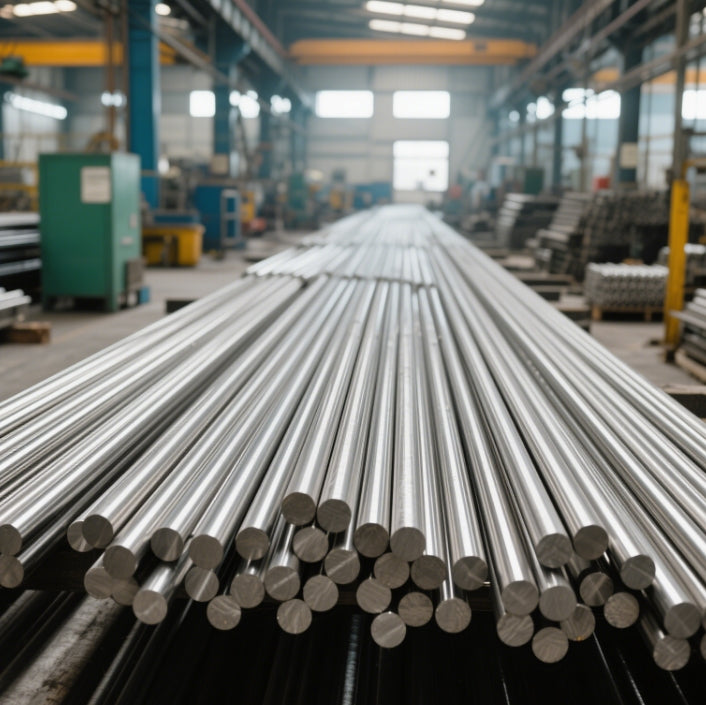
What Is the Best Tool to Cut Stainless Steel?
Table of Contents
Introduction
Cutting stainless steel presents unique challenges due to its exceptional durability and corrosion-resistant properties. Whether working with marine-grade 316L or standard 304 stainless, selecting appropriate tools significantly impacts project efficiency and safety. This guide explores practical solutions using common workshop tools while emphasizing safety protocols and material-specific considerations for optimal results.
Why Stainless Steel is Tough
The chromium content in stainless steel (minimum 10.5%) forms an invisible protective layer that resists oxidation and chemical erosion. Austenitic grades like 304 and 316L contain nickel enhancing ductility and work-hardening characteristics. When cutting forces are applied, the material's crystalline structure compacts at the cutting edge, increasing hardness by 20-30%. This phenomenon requires tools maintaining sharpness under high thermal stress while preventing work hardening through controlled cutting speeds.
Cutting Tools Comparison
Five primary tools handle stainless steel effectively:
Angle Grinder
Equipped with diamond-edged cutting discs (1-3mm thickness), grinders excel in quick cuts on thin sheets up to 6mm. The 11,000-15,000 RPM speed generates substantial friction requiring intermittent cooling. Ideal for onsite modifications but produces rough edges needing deburring.
Circular Saw
Carbide-tipped blades with 60-80 teeth prevent grabbing in thick plates. Use worm-drive models for enhanced torque control. Effective for straight cuts in 10-40mm thickness when paired with cutting wax lubrication.
Jigsaw
Bi-metal blades (24 TPI) handle curved cuts in 2-8mm sheets. Employ pendulum action settings to reduce blade deflection. Support sheets with plywood backing to minimize vibration-induced warping.
Plasma Cutter
40-60 Amp systems cut through 12mm steel at 1500mm/min with 0.8mm kerf. Requires compressed air drying to prevent porosity. Produces HAZ (Heat Affected Zone) of 1-2mm needing grinding for critical applications.
Hacksaw
32 TPI blades with alternate tooth patterns reduce binding. Apply consistent 15-20lb pressure using full blade length. Suitable for emergency cuts under 5mm thickness.
Pro Cutting Techniques
Maximize tool lifespan and cut quality through:
• Thermal Management: Apply continuous coolant flow (1L/min) or paste lubricants containing molybdenum disulfide
• Speed Control: Maintain 20-30m/min feed rate for power tools
• Workpiece Stabilization: Use magnetic clamps with 50kg holding force
• Edge Preparation: Deburr with 120-grit flap discs within 5 minutes post-cutting
Common Errors
Avoid these critical mistakes:
• Using dull blades increases cutting force by 300%
• Ignoring chip clearance causes re-cutting and surface scoring
• Cutting austenitic steels below 500°F risks chloride stress corrosion
• Improper tool angles exceeding 5° deflection accelerates wear
Tool Selection Guide
Match tools to project requirements:
• Frequency: Occasional use (≤5 cuts/month) - Manual tools
• Thickness: ≤6mm - Angle grinder; 6-25mm - Plasma cutter
• Precision: ±0.5mm tolerance demands CNC hydraulic shears
• Budget: $50-300 for basic setups; $800+ for industrial systems
Final Advice
Successful stainless steel cutting combines proper tool selection, maintained equipment, and adaptive techniques. For 304-grade under 10mm thickness, start with angle grinders using 1mm cutting discs. When handling 316L over 12mm, invest in plasma systems with 25ft ground cables. Always prioritize PPE - ANSI-approved face shields and fire-resistant apparel. With practice, you'll achieve clean cuts rivaling professional metal shops.